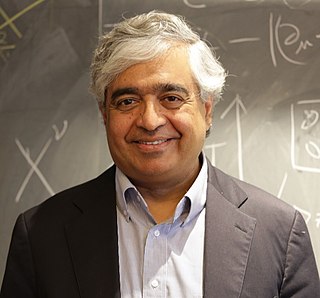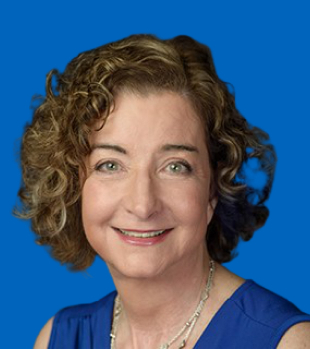Related Research Articles

Subir Sachdev is Herchel Smith Professor of Physics at Harvard University specializing in condensed matter. He was elected to the U.S. National Academy of Sciences in 2014, received the Lars Onsager Prize from the American Physical Society and the Dirac Medal from the ICTP in 2018, and was elected Foreign Member of the Royal Society ForMemRS in 2023. He was a co-editor of the Annual Review of Condensed Matter Physics 2017–2019, and is Editor-in-Chief of Reports on Progress in Physics 2022-.

David R. Nelson is an American physicist, and Arthur K. Solomon Professor of Biophysics, at Harvard University.
Steven M. Girvin is an American physicist who is the Eugene Higgins Professor of Physics at Yale University and who served as deputy provost for research at Yale from 2007 to 2017. Girvin is noted for his theoretical work on quantum many body systems such as the fractional quantum Hall effect, and as co-developer of circuit QED, the application of the ideas of quantum optics to superconducting microwave circuits. Circuit QED is now the leading architecture for construction of quantum computers based on superconducting qubits.

Laura H. Greene is the Marie Krafft Professor of Physics at Florida State University and chief scientist at the National High Magnetic Field Laboratory. She was previously a professor of physics at the University of Illinois at Urbana-Champaign. In September 2021, she was appointed to the President's Council of Advisors on Science and Technology (PCAST).
Claudia Felser is a German solid state chemist and materials scientist. She is currently a director of the Max Planck Institute for Chemical Physics of Solids. Felser was elected as a member into the National Academy of Engineering in 2020 for the prediction and discovery of engineered quantum materials ranging from Heusler compounds to topological insulators.
Elihu Abrahams was a theoretical physicist, specializing in condensed matter physics.
Peter J. Hirschfeld is an American physicist, currently a distinguished professor at the University of Florida and an Elected Fellow of the American Physical Society. His lab is studying the problems of modern many-body theory associated with superconductivity and quantum materials.
Mohit Randeria is a US-based Indian condensed matter physicist and a professor of physics at Ohio State University. Known for his research on condensed matter theory and superconductivity, Randeria is an elected fellow of the American Physics Society. The Council of Scientific and Industrial Research, the apex agency of the Government of India for scientific research, awarded him the Shanti Swarup Bhatnagar Prize for Science and Technology, one of the highest Indian science awards, for his contributions to physical sciences in 2002. He was awarded the 2002 ICTP Prize of the International Center for Theoretical Physics, Trieste and the 2022 John Bardeen Prize.
Nai Phuan Ong is an American experimental physicist, specializing in "condensed matter physics focusing on topological insulators, Dirac/Weyl semimetals, superconductors and quantum spin liquids."
Richard L. Greene is an American physicist. He is a distinguished university professor of Physics at the University of Maryland. He is known for his experimental research related to novel superconducting and magnetic materials.
Eun-Ah Kim is a Korean-American condensed matter physicist interested in high-temperature superconductivity, topological order, strange metals, and the use of neural network based machine learning to recognize patterns in these systems. She is a professor of physics at Cornell University.
Nandini Trivedi is an Indian-American physicist and Professor of Physics at Ohio State University. Her research is on the emergence of new states of matter arising from strong interactions between electrons in quantum materials. She was elected a Fellow of the American Association for the Advancement of Science in 2020.
Catherine Kallin is a Canadian theoretical quantum condensed matter physicist whose research topics have included spin wave theory, the quantum Hall effect, frustrated antiferromagnets, chirality in superconductors, and high-temperature superconductivity. She is a professor emerita of physics and astronomy at McMaster University.
Don-Ning "Donna" Sheng is a condensed matter physicist whose research involves two-dimensional systems including the fractional quantum Hall effect and quantum spin Hall effect, as well as the natural emergence of supersymmetry in topological superconductors. She is a professor of physics at California State University, Northridge, and is also affiliated with the Princeton Center for Complex Materials at Princeton University.
Erica W. Carlson is an American physicist specializing in superconductors, liquid crystals, and strongly correlated materials. She is 150th Anniversary Professor of Physics and Astronomy at Purdue University. As well as for her research, she is known for her work in physics education for quantum physics, and for her introduction of innovative technologies including podcasts and wikis into her physics teaching.
Allen Marshall Goldman is an American experimental condensed matter physicist, known for his research on electronic transport properties of superconductors and for the eponymous Carlson-Goldman mode involving collective oscillations in superconductors.
Ali Yazdani is an American physicist who focuses on understanding new quantum phases of matter. He is currently the Class of 1909 Professor of Physics at Princeton University and the Director of the Princeton Center for Complex Materials, a material research science and technology (MRSEC) center supported by the National Science Foundation. Together with Seamus Davis, he is the recipient of the 2023 Buckley Prize from the American Physical Society.
Emilia Morosan is a Romanian-American condensed matter physicist whose research involves the synthesis of quantum materials, including quantum criticality and unconventional superconductors. She is also known for her discovery of super-strong titanium gold alloys. She is a professor at Rice University.
Adriana Moreo is an Argentine-American condensed matter physicist whose research involves the computer simulation of superconductors, oxides of transition metals, graphene, and other strongly correlated materials. She is a professor in the Department of Physics & Astronomy at the University of Tennessee and a member of the research staff in the Materials Science and Technology Division of the Oak Ridge National Laboratory.
Gertrud Zwicknagl is a retired German solid-state physicist whose research involved the development of renormalized band theory for intermetallic solids and its application to the theory of superconductors and heavy fermion materials, as well as the study of heavy quasiparticles in uranium compounds. Formerly a professor of physics at the Technical University of Braunschweig, she retired in 2020.
References
- ↑ Nayak, Srila (April 7, 2015), "Faculty spotlight: Janet Tate", IMPACT magazine, Oregon State University College of Science, retrieved 2024-04-16
- 1 2 3 4 Curriculum vitae (PDF), September 2020, retrieved 2024-04-16
- ↑ Clark, Stuart (November 8, 2006), "Gravity's secret", New Scientist
- ↑ "Materials Synthesis and Characterization Facility", Oregon State University College of Engineering, retrieved 2024-04-16
- ↑ "New Roles for Five Women Faculty Members in Academia", Women in Academia Report, March 29, 2018, retrieved 2024-04-16
- ↑ Kohnle, Antje (June 2012), "Review of Quantum Mechanics: A Paradigms Approach", American Journal of Physics, 80 (7): 650–651, doi:10.1119/1.4705522
- ↑ "Fellows nominated in 2015 by the Division of Condensed Matter Physics", APS Fellows archive, American Physical Society, retrieved 2024-04-16